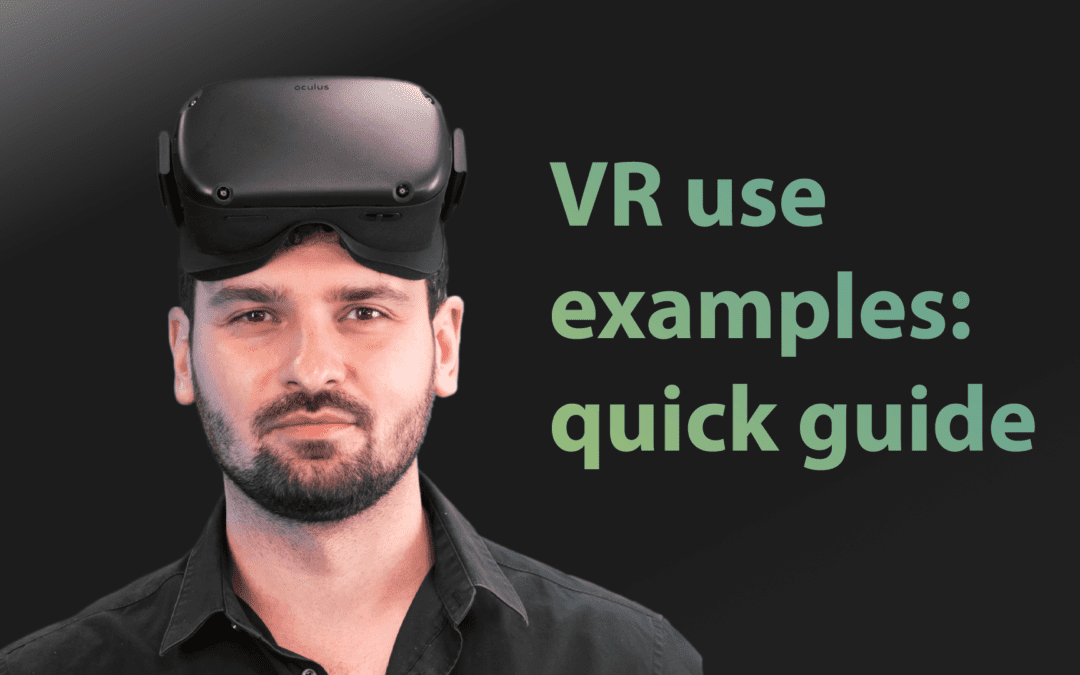Do you coordinate innovation processes in your company? Or maybe manage new technology implementation inside a business/education project? There’s also a slight chance you work in the entertainment/marketing sector and look for cutting edge audio-visual products. If you are here, it means Virtual Reality is something you consider interesting and worth exploring. We can’t argue with that.
What’s also true is that every VR or AR implementation is something more than just moving “real life” activities or views into the virtual or mixed reality world. It’s rather looking for new possibilities within the powerful medium that just a way to make something more appealing (which is a secondary advantage of this technology).
First, it’s important to understand how Virtual Reality works. It is a technology that uses head tracking devices (headsets) to display programmable 3D spaces and objects (present in a given application) that we can interact with. Using LCD screens, VR devices create spatial immersion correlated with the tracking module that tracks the user’s position in mapped space (either with external base stations that track the device or with built-in cameras). That way, the user’s movement is automatically represented inside the application.
The Vast majority of headsets also use dedicated controllers that help users interact with 3D objects. This utility allows developers to accurately (by mimicking real physics) recreate specific situations, for example, professional, technical, or other advanced actions one may know from the workshop or company warehouse.
What’s worth mentioning, there also different variations of headsets, mostly dividing into PC-linked ones (for example, Oculus Rift S, Valve Index, HTC Vive Pro) and the standalone type (for example, Oculus Quest, HTC Vive Cosmos, Lenovo Mirage Solo, Pico Neo 2). The first one needs to be constantly connected to the computer. The second one works the same as a game console, being an independent platform that runs applications without any external hardware.
So, what is the virtual reality use that can be helpful for your project?
VR is nowadays especially popular in the education sector. It serves as an immersive, engaging medium that can be utilized to conduct practical lessons, such as:
– virtual field trips,
– specific workshops,
– language courses,
– joint classroom debates,
– manual games,
– logic exercises.
It simply gives students a chance to interact with the objects that are not easily available for them, just to understand their characteristics and remember topics much better. It’s also possible to raise awareness about environmental or social issues reflected in visually engaging applications or 360 videos.
If you think about business-related virtual reality use, we can assure you of its potential, especially in the skill development area.
Here are some ideas for projects you can introduce with VR:
– team building exercises,
– health and safety courses,
– cybersecurity training,
– machine handling courses,
– technical case studies.
It’s, however, important to also think outside the box about the VR technology in business. There are several VR-enhanced development cases – virtual cooperation, creative processes held in virtual reality, virtual designing, creating marketing applications, business meetings even, and many more.
What more above schooling and business? Leisure activities, of course:
– virtual tours,
– art showings
– immersive competition,
– workout,
– social events (such as car cinema, friendly tournaments, quizzes).
It’s all possible with modern hardware and innovative development. Right now, all we have to do is just explore the possibilities and find the best ones for our needs.

